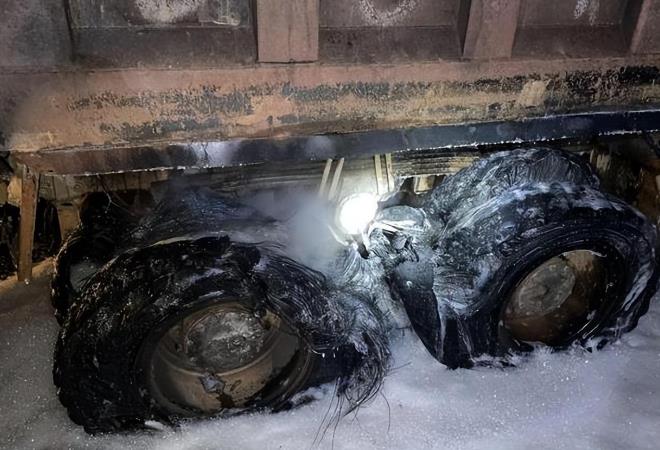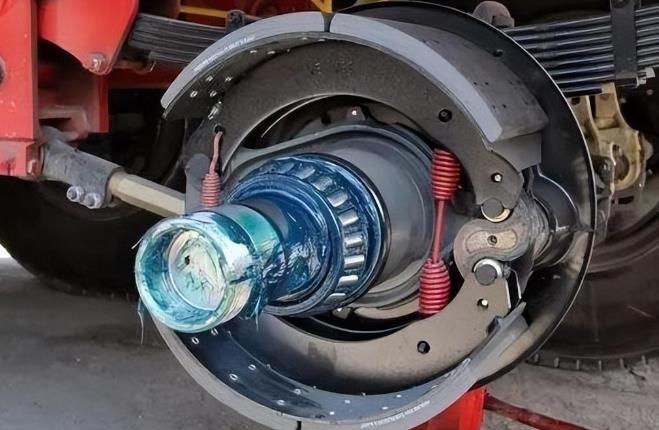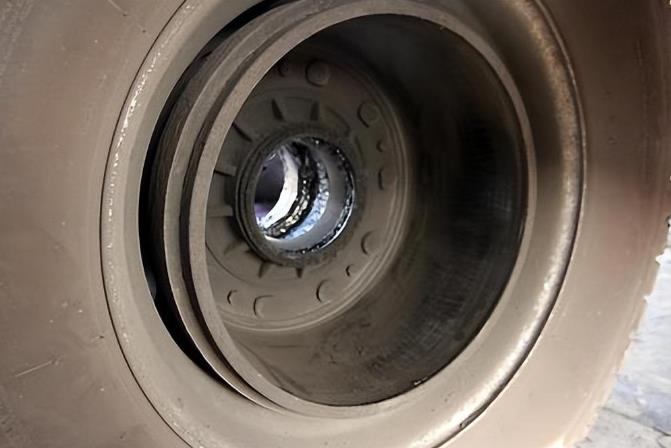How to judge if the trailer axle wheel end is hot?
The weather is hot in summer, and incidents of vehicle tire blowout or spontaneous combustion often occur, which brings great hidden dangers to driving safety. Hot wheel ends are a common cause of tire blowout or spontaneous combustion, so car owners pay more attention to this.

In general, when the truck is running, the wheel end will generate heat accumulation, especially when the vehicle is fully loaded, the wheel end temperature will rise, as long as it does not exceed 60°C, it is a normal phenomenon. If the temperature exceeds this temperature, and the frequency of over-temperature is relatively high, or there is always a single wheel end with super-high temperature, it can be judged as abnormal heating. There are two main factors causing this situation: one is the bearing, the other is Brake drum.
1. Bearing high temperature
The bearing is installed on the inner side of the wheel end and at the head of the trailer axle. It is mainly used to receive the trailer axle and tires. It not only assists in bearing the vehicle's own weight, but also bears the left and right stress of the trailer axle when turning. The high temperature of the bearing is mainly due to the tight assembly or poor lubrication. After the high temperature of the bearing, the internal lubricating grease will melt and flow out, which will not only damage the bearing, but also affect the braking effect.
One factor that causes high temperatures in bearings is grease, commonly known as butter. If the butter used is unqualified, under long-distance and long-term driving conditions, the internal and external bearings will increase heat due to the increase in friction between the metals, and the temperature of the bearings will rise abnormally, eventually causing bearing damage.
If the quality of the lubricating grease is okay, then check whether there is a problem of improper assembly and adjustment. For example, if the screw is tightened too tightly, it will cause the wheel end to generate high temperature during operation and cause the butter to evaporate. At this point, you can use a temperature measuring gun to check the hub temperature of each wheel. If there is a super high temperature phenomenon at the end of a single wheel, it is likely to be a problem of over-tightening.

It is worth noting that when adding butter to the bearing, don't be greedy, just the right amount, too much butter will not only make the lubrication effect counterproductive, but also may block the ABS sensor probe.
Now that we are talking about this topic, by the way, share the maintenance steps of wheel bearings:
(1) Stop the vehicle and set up the trailer axle to ensure the safety of the operation;
(2) Remove the hub shaft head decoration cover and dust cover;
(3) Remove the tire nut, remove the tire, and be careful not to damage the bolt thread;
(4) Remove the hub with a special tool;
(5) Scrape off the old lubricating grease in the bearings, journals and hub cavity, clean the hub bearings and journals with cleaning agent, dry them with a clean rag, and finally clean the inner cavity of the hub;
(6) Check the hub bearings and bearing races, if cracks, fatigue spalling, loose bearing rollers, and pitting appear on the bearing races, the bearings should be replaced;
(7) Check the fit between the inner diameter of the bearing and the journal. The fit clearance should be ≤0.10mm. When measuring the journal, it should be measured at the upper and lower parts of the vertical ground. If the fit clearance exceeds the specified use limit, the bearing should be replaced;
(8) After confirming that all parts meet the requirements, apply grease to the inner bearing and put it into the hub;
(9) Do not apply excessive amount of lubricating grease in the inner cavity of the bearing, squeeze the lubricating grease into the bearing until the lubricating grease emerges from the other side of the bearing;
(10) Put the wheel hub and outer bearing back, install the shaft nut, tighten it with the specified torque with the shaft wrench, turn the wheel hub a few times to check the installation of the bearing, whichever can be freely rotated and no axial clearance can be felt;
(11) Install the locking plate, fixed nut, tire, dust cover and decorative cover in sequence. Do not over-tighten or over-loose the screws. Too tight will cause the running clearance of the bearing to be too small and cause bearing ablation; It will cause slippage between the bearing and the hub or the axle, causing the wheel to shimmy and drive unstable, and the wheel may fly out in severe cases.

2. The brake drum is overheated
The brake drum is the part that generates the most heat on the entire wheel end, because it needs to generate friction with the brake pads to provide braking force, and friction will generate heat, so the brake drum will basically generate heat. Its temperature is related to the environment, vehicle speed, road conditions, The braking frequency and the load are closely related. Generally, it is between 100-200°C, and in some cases it can even reach above 300°C.
In fact, when the temperature of the brake drum exceeds 200°C, it is easy to burn the tire valve and cause the vehicle to blow out. When the brake of the vehicle does not return or the friction components are abnormally worn, it is more likely to cause the brake drum to overheat. .
The owner can jack up the vehicle and turn the wheels to see if it is flexible. If there is friction, it means that there is interference inside the brake drum;
Rotate the tires and step on the brake pedal to check whether the brake returns quickly and thoroughly. If it does not return or returns slowly, it means that the brake system is faulty and the vehicle needs to be repaired as soon as possible.

It is recommended that car owners choose products suitable for the working conditions when purchasing trailer axles, pay attention to the inspection of quality and performance, especially the key components such as bearings, hubs, and brake components, and try to choose high-strength products customized for freight vehicles. , high toughness, and high thermal capacity products can also guarantee reliable and stable performance output in high-speed, heavy-duty operating environments.







